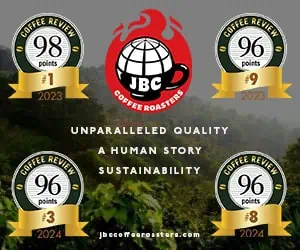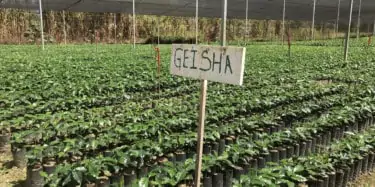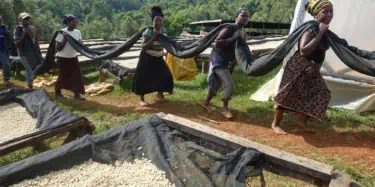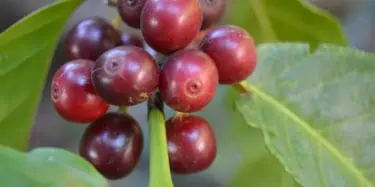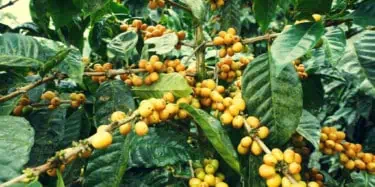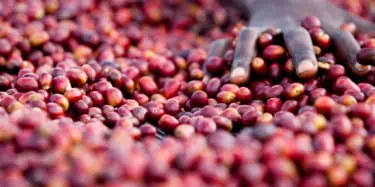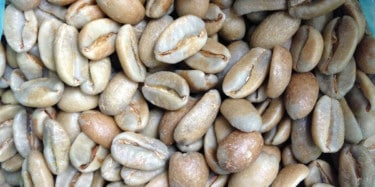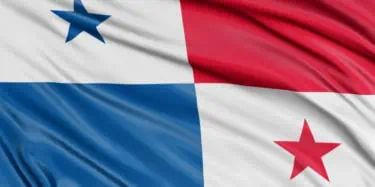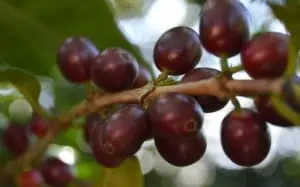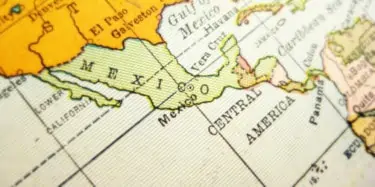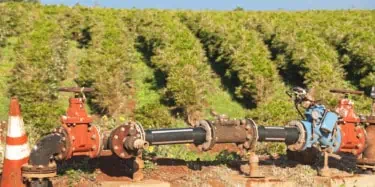I’ll start with a familiar story. Around 2004, a Panama coffee farmer, Price Peterson, found a field of coffee trees growing on his property that was different in appearance from other trees. He entered the coffee from those trees as a separate lot in the 2004 Best of Panama green coffee competition, and that coffee, competing as the “Geisha” variety of Arabica, blew away that year’s competition,
Tasting Reports – Tree Variety
Coffee Review has published more than 250 monthly coffee tasting reports since February 1997. The tasting reports below -- featuring coffees from a particular tree variety such as Gesha or Bourbon -- appear in reverse chronological order. You may refine your search by using the key word search feature that appears in the page header. The content in tasting reports and associated reviews was correct at the time of publication but may not remain accurate over time.
Our Love Affair with Geisha — It’s Not Just a Panama Thing Anymore
The Geisha variety of Arabica is the most expensive green coffee in the world. Year after year, this sought-after variety — known for (in the hands of a good roaster) its florality, delicate fruit, integrated structure and balance — breaks new price records in the Best of Panama auction. The Panama with the highest price in 2021 was a Geisha that sold for $2,568.00 — per pound. It’s gotten
The Joy of Kenya, Classic Coffee-Producing Origin
What makes a coffee taste like it does? Many factors go into what you ultimately experience in your morning cup. First, there’s the tree variety that produces the coffee. For specialty coffees, the varieties in question are, with rare exceptions, of the Arabica species, and there are hundreds of possibilities. Then, there’s the place in which the tree is grown — the coffee’s terroir. (There is
El Salvador Coffees 2019: Pacamaras, Bourbons and Change
When we focus a report on a single origin, in this case El Salvador, we try to time the report so that we are testing mainly freshly arrived coffees, coffees that represent the best of the year’s new crop. This year, however, we were a bit too early with our report timing. Many of the coffees we cupped early in July lacked vivacity and aromatic range, suggesting perhaps that they were last year’s
“Big-Bean” Coffee Varieties: Novelty, Scarcity, and Atypical Sensory Pleasures
Among the hundreds of coffees we review each year at Coffee Review, a very small percentage represent what we've come to affectionately call "big-bean" varieties, coffee from tree varieties that produce beans that are dramatically larger than average. The most common of these are Pacamara, Maragogipe and Maracaturra, though there are some even more obscure varieties whose beans are also
Gesha Coffees 2017: Still Pricey, Still Amazing
I was at one of the Specialty Coffee Association’s Re:co Symposia a couple of years ago, where Jay Ruskey of Goodlands Organic, the pioneer of California coffee-growing, was displaying fresh branches of two varieties of coffee trees at his table outside the meeting rooms. Some of the branches were from the respected mainstream Caturra coffee variety, which is producing some very nice coffees on
Geshas and the Rest: Single-Variety, Single-Lot Coffees
The variety play – marketing coffee by the botanical variety of the tree that produced the coffee – is one of the latest trends in the high-end specialty world. True, some roasters who submitted samples for this month’s article still confused tree variety (botany) with origin (geography), and sent us coffees from a single growing region (Sumatra, say) rather than coffees that reasonably can be
Not Your Same Old Panama Coffees
It’s a tribute to how much the specialty coffee world has changed over the last ten years that the style of coffee traditionally associated with Panama – clean, soft, balanced, gently fruit- and floral-toned – hardly showed up among the coffees nominated by roasters for this month’s article. True, Panama coffees of any kind very nearly didn’t show up, given the harvest was late and our article was
Botany and the Cup: The Bourbon Conundrum
We know that the species of the tree that produces our coffee profoundly influences how it tastes. And we know to the point of cliche that the arabica species produces all of the world's finest coffees. But what about the various botanical varieties of arabica, the coffee equivalents of wine grape varieties like the Cabernets, Chardonnays, Zinfandels, etc. that figure so prominently in the
2007 Prize-Winning Coffees from Central America and Colombia
This month we review ten prize winners from green coffee competitions held this year in Central American countries and in Colombia. These competitions, "during which a jury of international cuppers spends several well-caffeinated days slurping, spitting and obsessing over a gradually narrowing group of fine coffees from a given growing country," to quote my own earlier article on the subject (hey,
The Tanzania Peaberry Mystery
Actually two intertwined mysteries - why peaberry, a grade of coffee that is potentially available from any coffee growing region in the world, is so firmly associated with a single origin - Tanzania - that it is 1) usually the only coffee available from Tanzania in specialty stores, and 2) often the only pure peaberry available from any country in specialty stores. It also turned out to be the
The Mocha Taste
The eleven coffees the Coffee Review panel cupped this past month represent the essence of coffee romance and history. They are representatives of the world's original coffees, quite literally embodying history in the cup. Ethiopia is the botanical home of the coffee arabica tree, and Yemen, just across the Red Sea from Ethiopia at the southern tip of the Arabian peninsula, is where the tree was





